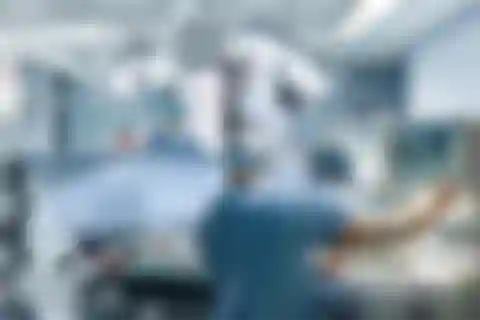Perioperative Nursing & the OR Team Learning Insights

An operating room is a hospital room designed specifically for surgical procedures. A safe and hygienic environment in the operating room can guarantee the maintenance of essential functions, stop risky secondary infections, and consequently support healing without any issues. For our clinical in the operating room, we have thought of OR techniques for our return demonstration. The surgical hand scrub in a local setting; sterile gowning and gloving; gowning and gloving in a surgeon; introduction to various basic surgical instruments as well as sharps and sutures; and surgical instrument arrangement
In the operating room, we make sure that the cap completely encloses all hair strands. Over our nose and mouth, we smugly and comfortably wear our mask. Hand scrubbing is the procedure of mechanically washing and applying chemical antisepsis to the hands and arms to get rid of as many microorganisms as possible. We remove all of the jewelry, make sure there are no artificial nails, and check to see if there are any cracks or cuts on our hands. We then drench our hands in water from the waist down, sprinkle a few drops of antiseptic, and lather vigorously up to two inches above the elbow. Holding the hands up and allowing the water to drip down to the flexed fingers, we wash our hands under running water. With the sterile brush in hand, we now apply the antiseptic solution. The abrasive portion of the brush is used to scrub one hand's nails in a circular motion (30 strokes). We scrub each side of your finger with 10 strokes of the nonabrasive part. We apply 20 strokes to the back of the hand and the palm, 10 strokes to each plane of the wrist, arm, and up to 2 inches above the elbow. After cleaning the brush, we go back and do the other arms and hands. After that, we let the brush go. After that, we thoroughly rinse our hands and arms. We enter the operating room with our hands raised, utilizing our backs after the surgical hand cleanses. The circulating nurse examines the scrub nurse's gown, grabs the hem, and completely yet independently dries both hands. We then locate the gown's middle fold and seize its neckband. Next, we locate the left and right sleeve holes and simultaneously skip both hands to each hole. The circulators hold the passes of the gown back in place. To protect the skin from any contaminants and to establish a barrier between a sterile and non-sterile area, sterile gloves are worn. Therefore, we use a close-gloving approach. We pick up the gown and extend its hem to the surgeon to pat their hands and arms dry when we are gloving and gowning a surgeon in a local situation. The gown is then slowly opened. We pass the surgeon the inside of the gown while keeping our hands on the outside and using the neck and shoulder portions of the garment. The circulating nurse then places the gown over the shoulders, adjusts the sleeves, and even passes the rear of the garment. To fasten the gown's waist, we stomp to grab the tie's point. We delicately pull the sleeves down to reveal the fingers before gloving the surgeon. We put on the sterile gloves, stretched, and put pressure with our thumbs upward to keep them away from the doctors' hands. We then do the same for the other hand. Sharps and sutures are introduced along with basic surgical equipment. The scrub nurse sets up the surgical supplies on the mayo table. The mayo tray will support itself and drape properly. According to use, the tools, sponges, and sharps are placed. All of the clamps are positioned on the left side of the mayo tray if the surgeon's dominant hand is on the right, and vice versa.
The return demonstration is a crucial element that prepares the way for us to learn about nursing practices. It helps us understand what nurses do. Our perceptions of our learning effectiveness improve after exposure to demonstrations. Our ability to reflect on our experiences paves the way for the development of pleasant feelings within ourselves and changes in our professional behavior. One thing I also learned is that having the ability to work as a team will make the procedure work safely and successfully. I also discovered that teamwork is essential to ensure the safety and success of the system. We need to be highly organized and detail-oriented. We need to be aware of everything's location and keep an eye on everything. This demands us to be aware of both the big picture and the tiniest particulars, and it necessitates that we always are aware of the requirements of the patient, the equipment, and the surgical team.
